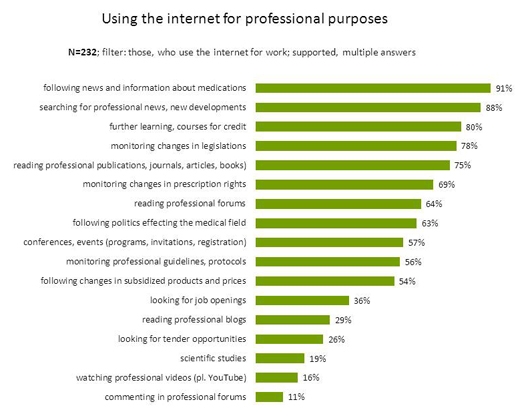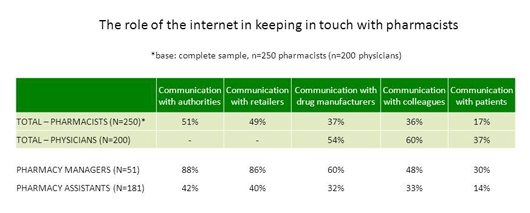Keeping in touch with pharmacists in the digital age
- 2013-08-27 11:04:00
- Generic
Number of pharmacy managers with internet connection is growing
Indicators show growth in both connectivity and internet use amongst pharmacists. Based on survey results from previous years by position this growth appears to be faster among pharmacy managers.
Not surprisingly, the frequency of reading emails shows different trends as well: while more than 80% of pharmacy managers read emails at least once a day (if not more frequently), only around 50% of pharmacy assistants do the same.
Using smartphones for reading emails is more and more common, and this is true for pharmacists as well – especially the ones in leading positions. While a year ago 25% of pharmacy managers owned smartphones, their number almost doubled (43%) by the current year! There was no significant change amongst pharmacy assistants, the rate of smartphone owners went from 25% to 29%.
Pharmacy managers are already active when it comes to keeping in touch online
Using the internet for professional purposes is common both among managers and assistants, although managers are more keen to utilize the opportunities presented by online platforms. The most popular professional activities include looking for information about certain drugs (91%), following news and current developments (88%), and getting information about further learning opportunities (80%), while a smaller group participates more actively online (for example 11% of them share comments on forums).

When analyzing these trends by position managers appear to be more active in online communication regardless of the recipient. Looking at the results amongst physicians, pharmacy managers fall behind slightly in keeping in touch with companies and patients online, while the difference between doctors and pharmacy managers is more significant in communicating with colleagues. Responses show a wider gap when it comes to pharmacy assistants, where online communication is less common.

About the research
Szinapszis Group has monitored the internet use of Hungarian pharmacists annually via independent studies since 2008. This survey was conducted via telephone in January 2013 with n=51 pharmacy managers and n=199 assistants participating using a sample representative for the country.













